How to create a perfect hand-made boat (and, more importantly, why)
In the heart of Lyme Regis a very special type of school: an academy where people come from around the world to learn the craft of boatmaking. Clive Aslet paid a visit.
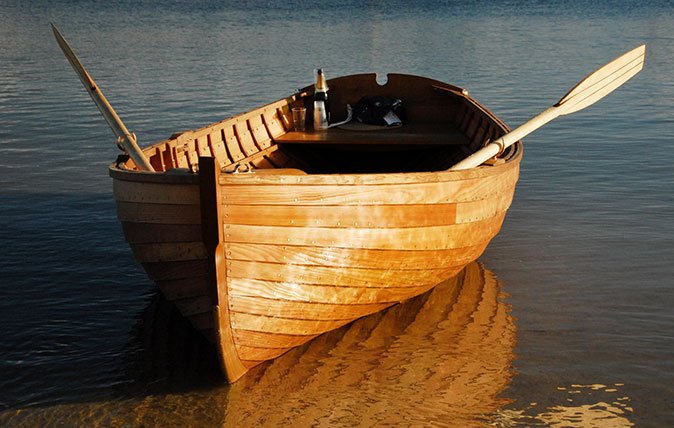
Sam was the principal clarinet of the band of Her Majesty’s Coldstream Guards. Simon was a shipbroker. Steve used to be a professional golfer, before becoming a policeman.
Now, they’re working alongside each other, sharing the same spartan accommodation as well as a passion that will keep them at their benches until long into the evening.
Where do you think they are? There’s only one place in Britain, I should imagine, that draws on such a heterogeneous talent pool: the Boat Building Academy at Lyme Regis, Dorset.
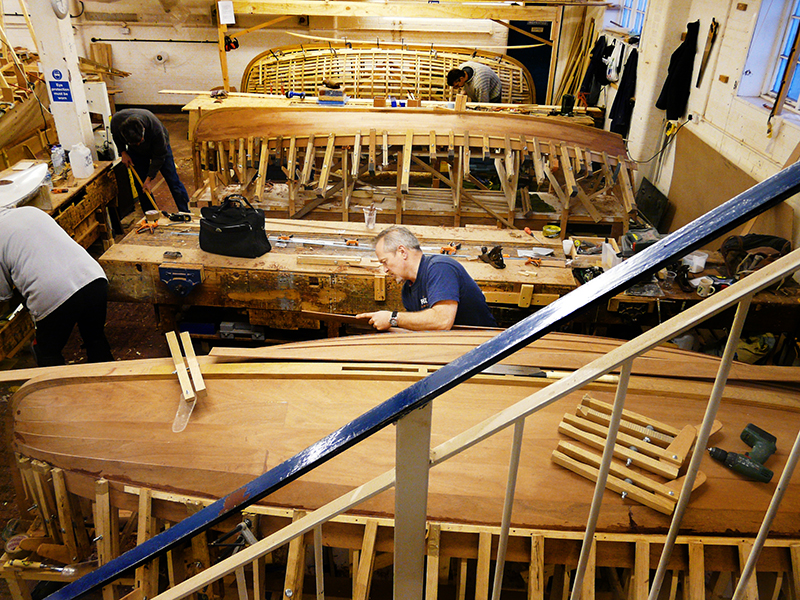
It’s been going for 20 years, a school of boat-building craft that has – to listen to its relaxed principal, Yvonne Green – an unintended hint of a social enterprise about it. People come and they’re changed, ‘particularly,’ she says in a whisper, ‘the bankers.’
You can be the richest man in the City, but it doesn’t mean you can get your own way with a piece of timber – in fact, the 18-year-old next to you, who’s only just managed to scrape together the more than £14,000 fee for a 40-week course or is on a bursary from the City & Guilds, might find it easier to plane the plank of a clinker-built boat than you do. It’s humbling.
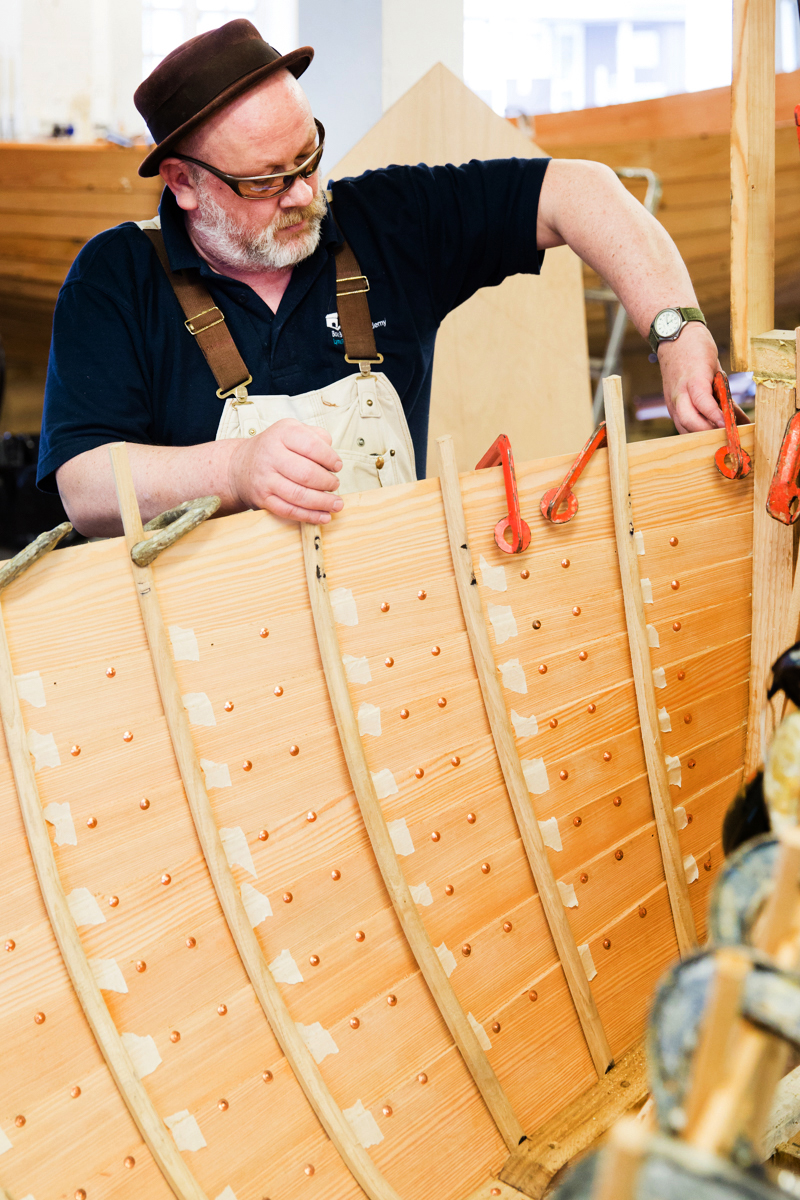
In the workshop, there are people from all walks of life, some of them sea-loving youngsters – third-generation members of the Lyme Regis Sailing Club – who want to make boat-building their career.
They’ve come to the right place. Thanks to the boom in superyachts, combined, oddly, with the economies that some boat owners have been making since 2008 (they’re keener to have old boats restored than to buy new ones), skills in this area are in hot demand. ‘It’s unusual for someone to be unemployed two months after finishing,’ confirms Yvonne.
Exquisite houses, the beauty of Nature, and how to get the most from your life, straight to your inbox.
"They’re here out of love – for boats, for the sea, for the wonders that can be achieved using sharpened tools, copper rivets and correctly chosen pieces of wood. It’s infectious."
Many graduates go straight into jobs, whether in boatyards or as highly paid superyacht crew. For others, the experience of learning about wood – discovering the pleasure of hand work, slowing down – is a reward in itself. Hipsters know all about it.
There’s a trend here. Recently, a boat made by an academy student was displayed in Messums Wiltshire, the tithe barn that Johnny Messum has converted into an art gallery-cum-happening space for crafts. Johnny runs workshops in pottery and woodworking for stressed executives, including a merchant banker who flew over from Sydney specially to attend.

‘People who spend their lives in front of computer screens want to look at things in a different way. Not everything in this world is consumerist,’ he reflects.
I fall over the four dogs in Yvonne’s office and meet Matthew Law. As well as being the owner of Picardy, the little grey lurcher that was just under my feet, he’s one of the instructors, the front pocket of his dungarees usefully filled with pencils, felt tips and an invaluable steel rule.
Once upon a time, Matthew worked at the Tate Gallery, on the Modern British collection, before abandoning the art world for disaster relief in East Africa. In 1999, he did one of the City & Guilds courses at the academy, then worked in a boatyard.
He laughs at the idea, sometimes conceived by self-conscious arty folk, that he’s now a ‘maker’. Matthew simply found himself, as a keen sailor, with a collection of old wooden boats and no idea how to maintain them.
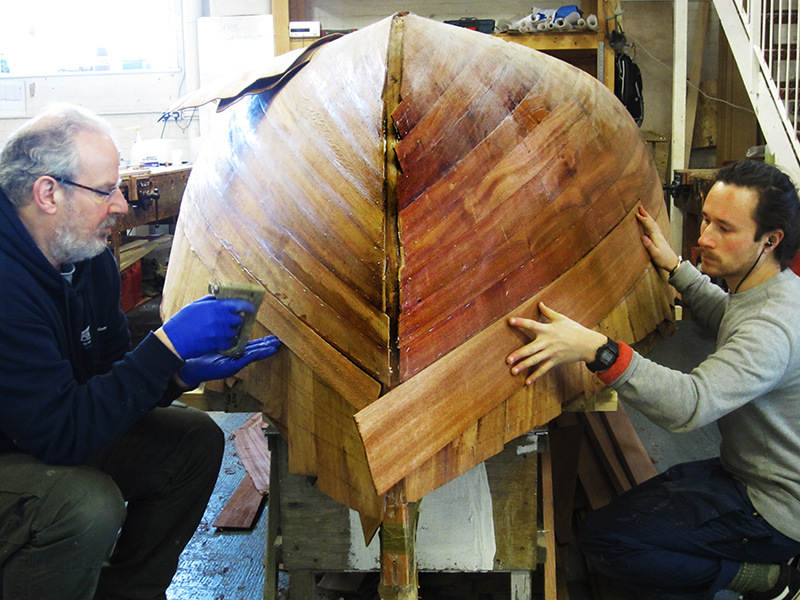
He learnt his trade and now passes on his formidable knowledge to the students. They get 40 hours of instruction time per week.
This place is about boats: not just learning about them theoretically, but actually building them from scratch. Not that it’s a commercial yard, taking orders from the public – the clients are the students. Each group of 18 (there are two groups a year) will produce eight or nine craft of all types.
Of course, they must know the techniques involved first: the first three months are a crash course on tool-sharpening, ‘lofting’ (making the full-sized measured drawings from which templates will be taken), laminating and everything else.
"Some of them don’t even sail. Afterwards, they may become cabinetmakers. ‘People are attracted by the sculptural aspect of boats,’ says Matthew"
Then come the boats and the students can make whatever they like. ‘It could be a beautiful tender for a superyacht or a rowing boat for the river at the end of the garden,’ says Matthew.
I see the craft in their underclothes: the wooden jigs that often precede the construction of the boat proper. They look like skeletons from the Natural History Museum.
There’s an Orkney yole on the go: it belongs to Rod, who used to run his own business teaching bushcraft and outdoor skills (a yole, incidentally, is the sailing boat that used to be the workhorse of Orkney fishermen). Angus is laying down the keel of a boat from Snekkersten, in Denmark: he has a Danish wife.
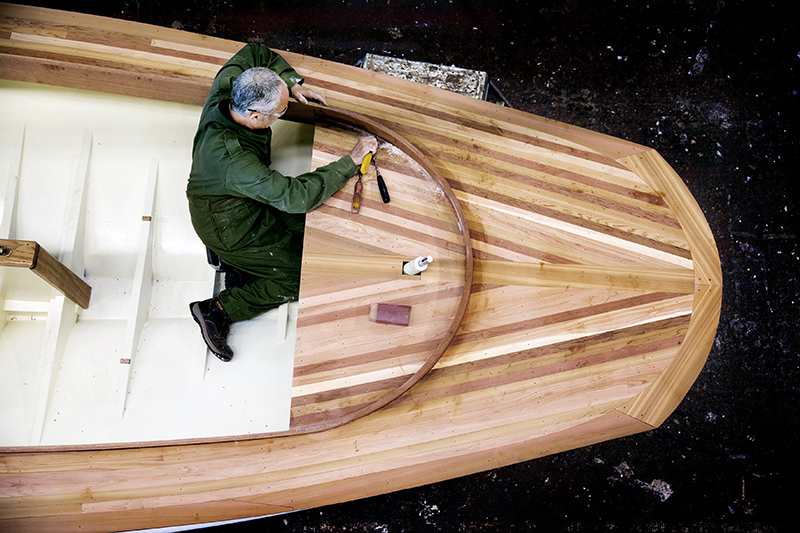
Young Jake, a qualified dinghy instructor, has chosen an 11ft Moth Dinghy, made of plywood sheets stitched together with tape. ‘It’s supposed to be simpler,’ he sighs, ‘but that’s not what I’ve found.’
Jake’s last job was making Merlin Rockets: not a firework or an ice cream, as an ignorant visitor might have thought, but a class of dinghy. He’d like to go back to the company, at a higher grade, when he’s finished the course.
Then come the Beaulieu scows, the two-seater motorboat and the outboard launch – all as different as chalk and cheese and each requiring particular skills. ‘You see how the transom has been joggled to fit the clinker planks,’ points out Matthew.
I nod knowingly. He’s already told me about joggling: notching a piece of wood so that it fits the projections of another, a craft technique that seems as old as the sea itself. Newer methods involve lasers to keep jigs level and vacuum pumps to provide an even pressure when a large piece of lamination is being applied to what will form the back – sorry, stern – of a motorboat.
Modern glues are so strong that they seem perilously close to cheating. The rigidity of some vessels is provided not by the timber, but the thin layer of glass in which they are coated. However, wood is still wood and the steel rule is forever being whipped out of the dungaree pocket to check that it’s been pared to the correct fraction of an inch.
Whoever ‘commissions’ the boat gets to keep it at the end of the course, but the students work in teams and, if necessary, all together. A dozen of them sleep on site, in accommodation that doesn’t seem to have changed very much from the time it was built for the RAF rescue motorboat crews that used to operate out of Lyme Regis harbour after the First World War.
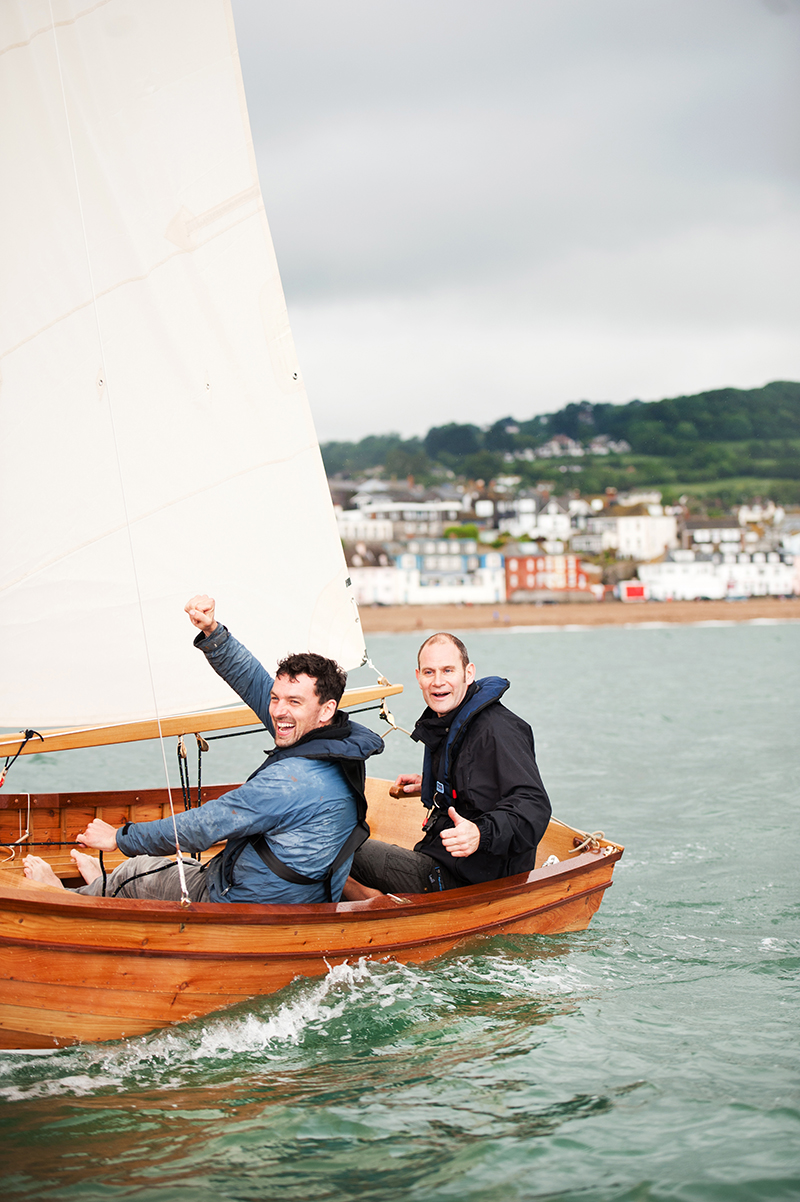
They work together, live together and obsess about boats. It all seems good-humoured enough, despite the tensions one might have thought could develop. There isn’t time, for one thing. For another, the characters are too diverse.
Some of them don’t even sail. Afterwards, they may become cabinetmakers. ‘People are attracted by the sculptural aspect of boats,’ explains Matthew, ‘or they love the liminal character of the shoreline.’
There’s something of a poet in Matthew, perhaps in all of them. Because they’re here out of love – for boats, for the sea, for the wonders that can be achieved using sharpened tools, copper rivets and correctly chosen pieces of wood. It’s infectious.
At the end of the course comes a ceremony in which the boats are carried out to the harbour and launched. ‘I always have a lump in my throat,’ confesses Yvonne. As the students leave the Academy, one voyage of discovery comes to an end, but another has only just started.
Find out more about The Boat Building Academy in Lyme Regis at www.boatbuildingacademy.com